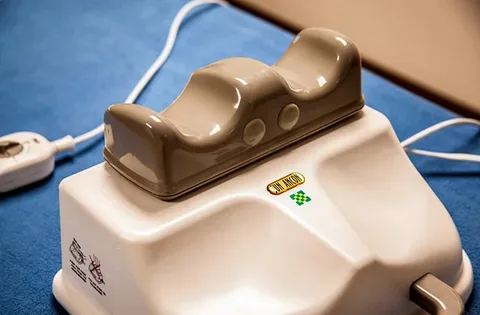Photography is more than just pointing a camera and clicking a button. It’s an art form that combines technical mastery with creative vision. For beginner photographers, the technical side of photography can feel overwhelming, but understanding the fundamentals of camera settings is the first step toward mastering your craft.
This comprehensive guide will walk you through the essential camera settings every new photography enthusiast should know. From aperture and shutter speed to ISO and white balance, you’ll learn to take complete control of your camera and create images that capture your vision.
By the time you finish reading, you’ll understand these fundamental settings and know when and how to apply them in real-world scenarios. Whether you’re shooting on a DSLR or a mirrorless camera, this is your starting point in photography.
Aperture: Shaping Your Depth of Field
If cameras had a “soul,” Aperture would easily be one of the most creative tools in its arsenal. The Aperture is one of the three main pillars of photography (alongside shutter speed and ISO) and directly influences the depth of field and the brightness of an image.
What is Aperture?
Aperture refers to the size of the opening in your camera lens that allows light to enter. It works much like the pupil in your eye. The size of this opening is measured in f-stops, such as f/1.8, f/4, or f/16. The smaller the number (e.g., f/1.8), the wider the Aperture, allowing more light into the sensor. Conversely, a larger number (e.g., f/16) means a narrower aperture.
Impact on Depth of Field
Depth of field (DoF) refers to how much of your image is in sharp focus.
- Wide Aperture (f/1.8–f/3.5) creates a shallow depth of field, keeping the subject in focus while blurring out the background. This is perfect for portraits and isolating your subject.
- Narrow Aperture (f/11–f/22) provides a deeper field depth, keeping the foreground and background in focus. This is ideal for landscape photography, where you want all elements to appear sharp.
Practical Tips for Aperture
- For portraits, use a wide aperture (f/1.8 to f/4) to make your subject stand out.
- Opt for a narrower aperture (f/8 and above) for group shots or landscapes.
- Experiment with aperture priority mode (A or Av mode on your camera) to practise controlling your depth of field while the camera adjusts the other settings for you.
Pro Tip: Many photography courses, including photography courses in Delhi, often provide hands-on lessons on controlling the Aperture to perfect your photography basics.
Shutter Speed: Capturing Motion and Time
Shutter speed determines how long the camera’s shutter remains open, dictating how much light hits the sensor. It also plays a significant role in freezing or creating artistic motion blur.
Explaining Shutter Speed
Shutter speed is measured in fractions of a second, such as 1/500, 1/250, 1/60, or even multiple seconds (e.g., 2″ for 2 seconds). A faster shutter speed (e.g., 1/1000) captures quick action without blur, while a slower shutter speed (e.g., 1/30 or slower) allows the camera to capture motion blur.
Real-World Examples of Shutter Speed
- Fast Shutter Speed (1/500 or quicker): Perfect for capturing subjects in motion, like sports, wildlife, or children running around the park.
- Slow Shutter Speed (1/30 or slower): Ideal for low-light conditions (with a tripod) or creating long exposure effects, such as light trails or smooth water motion in landscapes.
Practical Tips for Shutter Speed
- Avoid blurry images from hand movements by using a shutter speed that is faster than your focal length. For example, if using a 50mm lens, aim for at least 1/60.
- Experiment with your camera’s shutter priority mode (TV or S mode) to focus solely on motion-capture techniques.
ISO: Adjusting Your Camera’s Sensitivity to Light
ISO is crucial when working in different lighting conditions. It determines how sensitive your camera sensor is to light and is often the setting beginners struggle with the most.
Demystifying ISO
ISO is measured in 100, 200, 400, 800, 1600, and higher numbers.
- Low ISO (e.g., 100 or 200): Use this for sharp and clean images in well-lit situations.
- High ISO (e.g., 800 or above): For darker environments, raising the ISO helps increase the brightness of your images—but at the cost of introducing image noise.
Ideal ISO Settings for Beginners
- Bright daylight outdoors? Stick to ISO 100 or 200.
- Shooting indoors or at dusk? Try ISO 400–800.
- Night scenes without a flash? Use ISO 1600 or higher, but ensure a noise reduction setting is activated.
Practical Tip for ISO Management
If you’re unsure, use the Auto ISO setting to allow your camera to adjust it for you under changing light conditions. As you grow more comfortable with manual shooting, experiment with ISO to find the balance between light and noise.
Pro Insight: Use tips from a structured photography course to fully understand ISO and its interplay with aperture and shutter speed for stunning, well-balanced images.
White Balance: Achieving True-to-Life Colours
Have you ever taken a photo indoors under harsh fluorescent lights, only to find your image has an unnatural greenish hue? That’s where white balance comes into play.
What is White Balance?
White balance adjusts the colours in your image to match the lighting conditions, ensuring they appear natural. Standard white balance settings include Auto, Daylight, Cloudy, Tungsten (for indoor lighting), and Fluorescent.
Why White Balance Matters
The colour temperature of light (measured in Kelvin) varies depending on the source. Daylight is neutral, while tungsten lights are warm (yellow/orange). White balance corrects these colour casts for accurate representation.
Tips for Customising White Balance
- Use Auto White Balance (AWB) if unsure of the lighting conditions. Most cameras do a decent job of adapting automatically.
- Experiment with manual settings or custom white balance for creative control for tricky lighting scenarios.
Bringing it All Together
Mastering your camera settings is about developing a balanced understanding of how Aperture, shutter speed, ISO, and white balance work in unison. Here’s a quick recap of these fundamental settings:
- Aperture: Controls depth of field.
- Shutter Speed: Dictates motion blur.
- ISO: Adjusts brightness and noise.
- White Balance: Ensures accurate colours.
When these settings are used thoughtfully, they become the building blocks for every striking photograph.
To gain confidence and mastery over these settings, keep practising! Whether you’re capturing portraits, landscapes, or action shots, remember that photography is as much about experimenting as it is about executing techniques.
Looking to take your skills further? Enrol in one of the best photography courses in Delhi or explore online options that fit your style and schedule. Your photography adventure is just beginning!












































